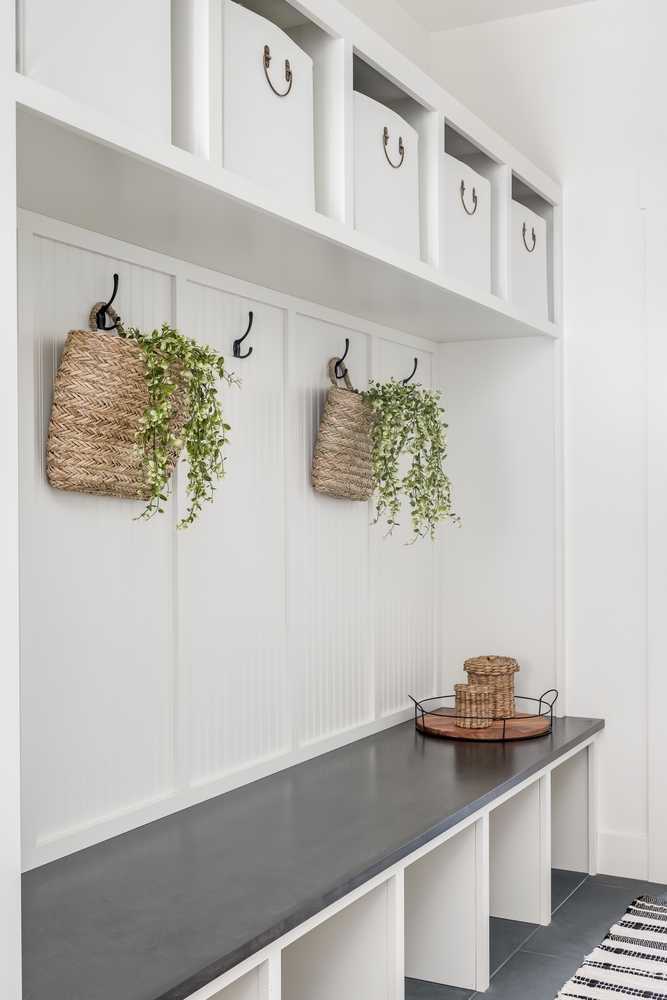During the months when the world is cold, wet and snowy, you may begin to wish that you had a mudroom. A mudroom is a place where everyone who comes into the home can wipe their feet, drop off their shoes or boots and remove their soaked hats and jackets and any other winter or outdoor gear to keep outside from coming in.
Does this sound like something that your home needs? Here are some tips to create the perfect mudroom in your home.
Give it space. The mudroom should be a room that is accessible from the outside. The goal is to leave the mess here so you don’t have to go through another room to get to it, therefore keeping the house dry and clean. You may choose an entire room for your mudroom (like a garage, basement entry or a closed-in porch). Alternatively, you can turn a portion of the room into the mudroom (such as the tiled entryway of the foyer or kitchen by the door).
Start from the ground up. The ideal mudroom has floors that are easy to clean with a simple mop-up. This area is going to get really wet, snowy and dirty. It will probably need to be cleaned daily during the winter months. You don’t want to have to get down on your hands and knees and scrub every time you clean it, so make sure that the floor is right for a mudroom. Concrete, tile and linoleum are the easiest to clean. If the area that you’ve selected for your mudroom doesn’t have easy-to-clean flooring, lay out rugs, drying mats and boot racks.
Getting your foot in the door.
Make sure that you’ve added a durable rug to the mudroom area right inside (and maybe outside too) of the door so feet can be wiped as soon as people come in. Use a washable rug, ideally in a darker color so it doesn’t have to be cleaned as often.
Waiting for the shoe to drop. It’s important that once individuals enter your home and wipe their feet, they should also have a place where snowy, wet shoes and boots can be removed. Consider installing a storage cubby or set of cubes – just place a microfiber cloth inside each cubby to trap excess water and dirt. For smaller spaces, shoe and boot racks with a mud tray underneath work nicely and help them dry much quicker.
Hang it out to dry. After a long day in wintry weather, you will need somewhere to hang wet coats, snow pants, hats, scarves and mittens so they can air out and dry off efficiently. Typically, it includes a coat rack, a hat rack and a mitten rack. There are many DIY tricks you can try for these as well. Wet and snowy clothes go here during the winter months and wet swimsuits can be hung up when it’s warmer out.
Off the hook. You will need additional space for hanging up items that aren’t wet but are designed for cold weather. Coats, hats, scarves and even bookbags can be organized neatly on these hooks so they are ready to go later and have a designated spot to store them.
Put all your (storage) in one basket…or two. Use containers that are weather-resistant to store extra hats, gloves, scarves and outdoor toys.Noneedtobreakoutinacold sweat when someone says they can’t find their gloves or left their hat on the bus.
Deck the halls…including the mudroom. The mudroom is indeed a great place for storing winter gear and shedding wet clothes, but it is also the first thing people see when they walk into your home. Add a decorative touch with fun-colored rugs, stylish cabinetry or cubes, attractive baskets or storage solutions and maybe even some wall décor. Whatever you do, make it yours with both function and style!
